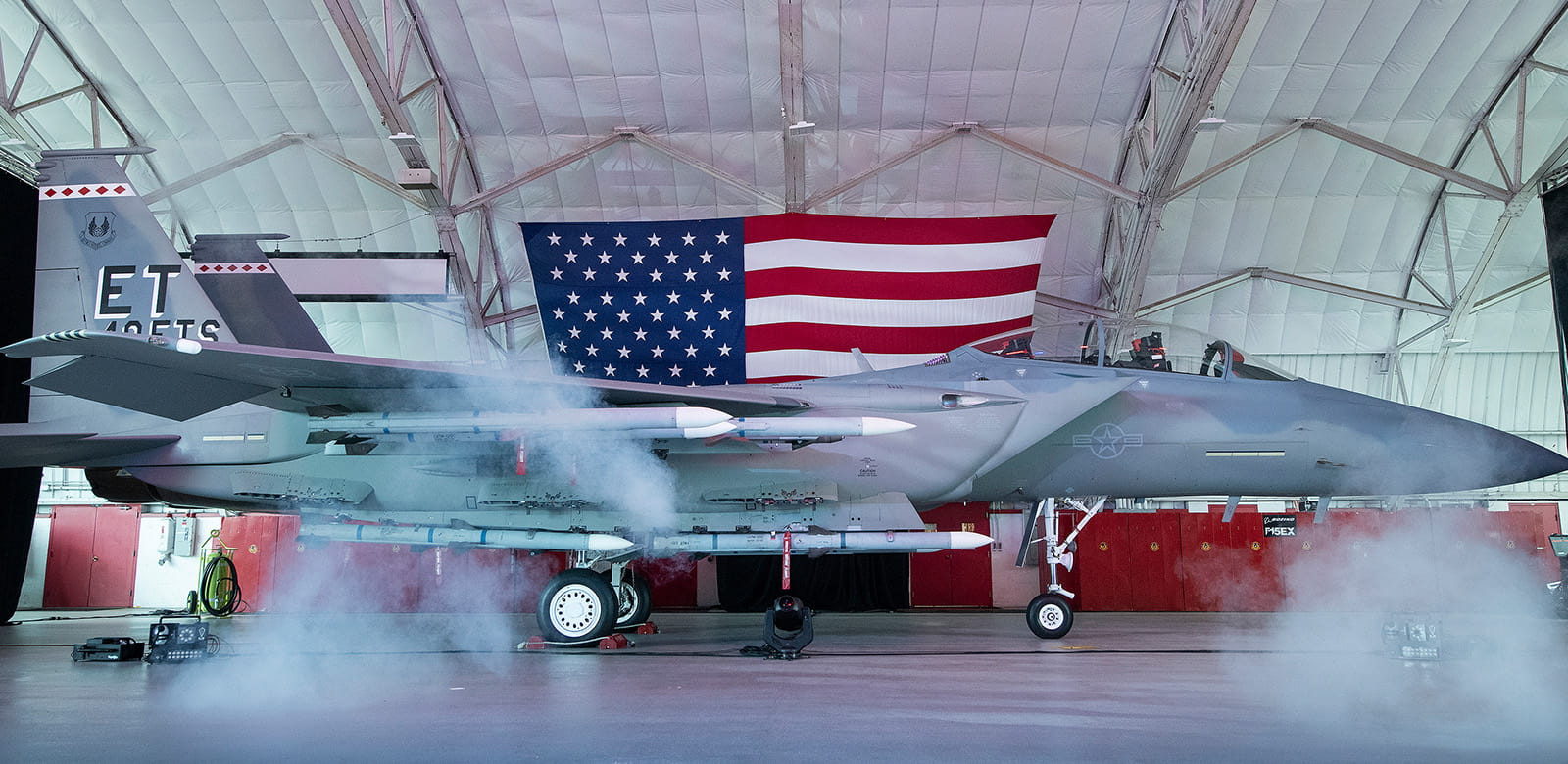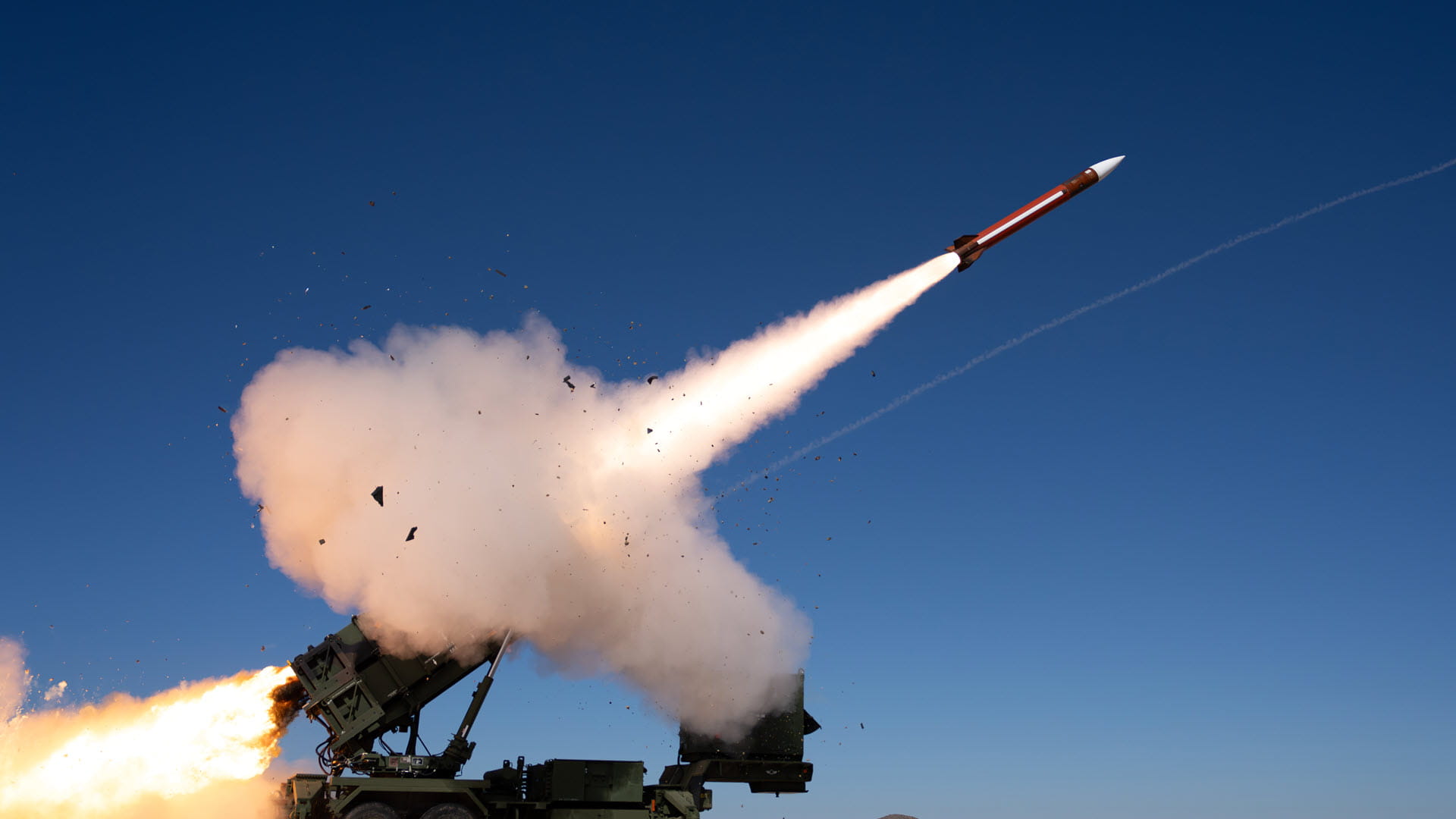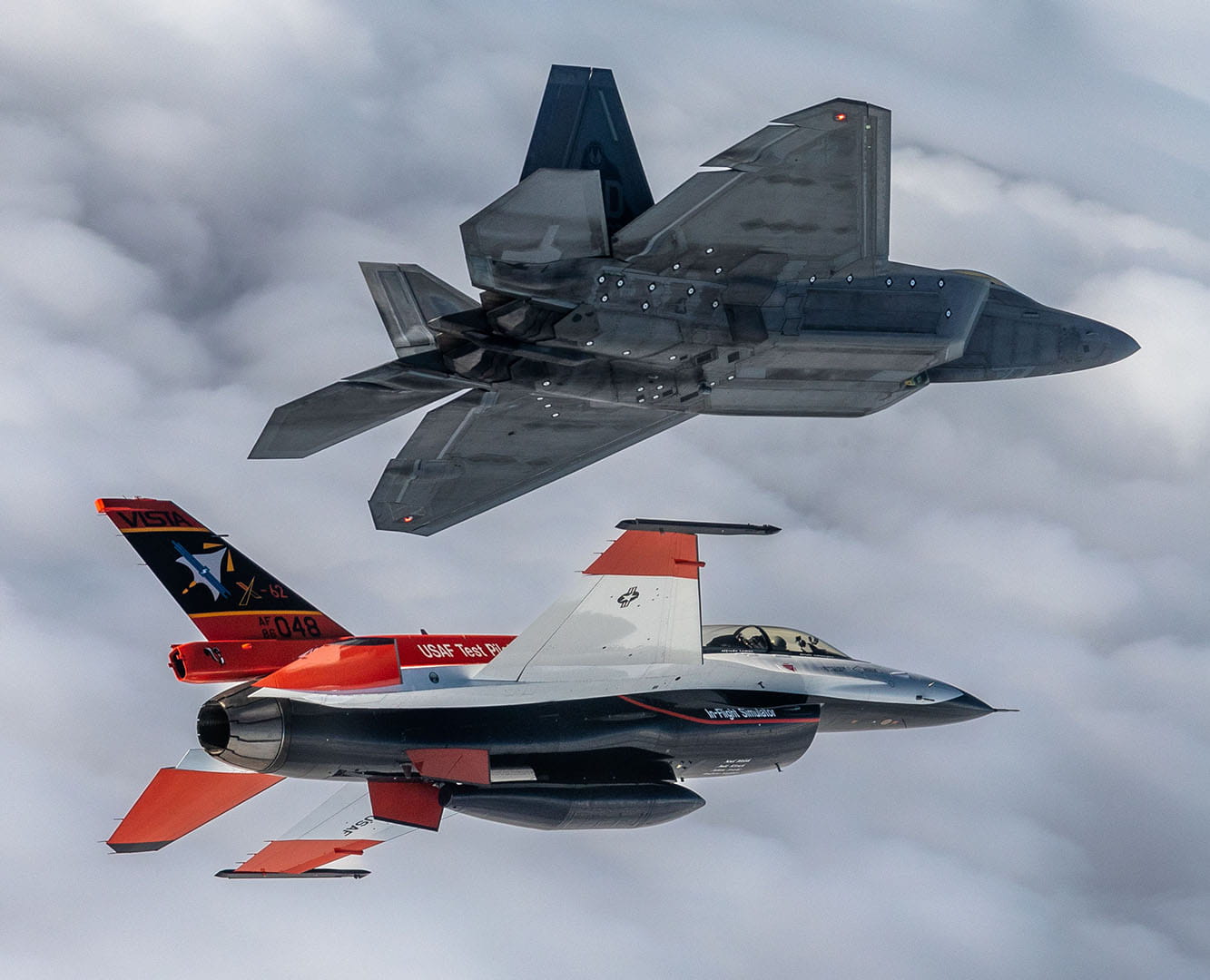The F-15EX Eagle II: What we’re bringing to the Air Force’s new fighter
The U.S. Air Force’s new F-15 fighter jet now has a name – the F-15EX Eagle II – but that isn’t all that’s new.
The jet, unveiled in a ceremony at Eglin Air Force Base in April 2021, will have more computing power, greater maneuverability and a formidable arsenal. And Raytheon Technologies has developed several systems for the new 21st-century fighter including precision weapons, sensors and avionics.
“The Air Force’s newest fighter (F-15EX) will deliver advanced capability in support of the air dominance mission,” said Paul Ferraro, vice president of Air Power for Raytheon, a Raytheon Technologies business. “We are proud to provide the sensor, radar and effector technology that will help the Eagle II dominate the airspace.”
The F-15EX’s weapons
One of the F-15EX’s key features is a large weapons carriage and the capability to carry hypersonic weapons. Raytheon is equipping the F-15EX with three weapons that complement one another:
The AIM-9X Sidewinder missile is a shorter-range air-to-air missile that uses infrared instead of radar to detect, track and guide to a target. The F-15EX can carry up to six AIM-9X missiles on its wings.
The newest version of the AMRAAM missile can detect, target and engage enemy aircraft at distances well beyond visual range. And it has GPS-aided navigation and a two-way data link. The F-15EX can be armed with up to 12 AMRAAM missiles.
The StormBreaker smart weapon can see through fog, smoke and rain as it glides over 45 miles to strike a moving target. Depending on the mission, the Eagle II can carry more than 16 StormBreaker weapons. In 2020, the Air Force cleared the system for use on the F-15E, making it the first aircraft to carry the new weapon.
The F-15EX’s radars, avionics, interior and exterior
Raytheon, a Raytheon Technologies business, will integrate its APG-82(V)1 active electronically scanned array, or AESA, radar into the F-15EX. The modernized radar can detect, identify and track multiple air and surface targets at the same time and at longer ranges than ever before. It’s the latest radar advancement for the F-15E fleet.
“Our partnership with the Air Force and Boeing continues on with this historic program,” said Eric Ditmars, vice president of Secure Sensor Solutions at RI&S, who attended the recent unveiling. “Providing our air dominance solutions to the F-15EX ensures successful mission execution and a safe return home.”
The Eagle II can also be equipped with Raytheon’s Expeditionary JPALS, short for Joint Precision Approach Landing System, a military ground-based landing system. It supports landings in rugged terrain and poor visibility and can operate despite "spoofing," or jamming that aims to disrupt its ability to receive valid data or any data at all.
Collins Aerospace, a Raytheon Technologies business, provides a range of solutions to support the F-15 aircraft. These include wheel and brake systems as well as the canopy remover and two ACES II ejection seats for the Eagle II’s aircraft escape system. As part of its patented GRID-LOCK® technology package, Collins provides the ailerons, flaps and vertical leading edges to fit with the platform’s horizontal stabilator.
The F-15EX’s engine
Pratt & Whitney, a Raytheon Technologies business, has powered every operational F-15 in the U.S. Air Force fleet for more than 40 years. It has submitted a proposal for its F100-PW-229 engine to power future lots of the F-15EX. This engine also powers many U.S. Air Force Strike Eagles and uses that technology to enable a multi-role, air-to-ground fighter.
The F-15EX will be the first Air Force aircraft to be tested and fielded from beginning to end, through combined developmental and operational tests.
The Oregon Air National Guard will take delivery of the first F-15EX in Fiscal Year 2024, and the jet is expected to be operational in 2025.
“With its large weapons capacity, digital backbone and open architecture, the F-15EX will be a key element of our tactical fighter fleet and complement fifth-generation assets for decades to come,” said U.S. Air Force Lt. Gen. Duke Richardson.

Lt. Gen. Duke Richardson presented the F-15EX in the ceremony. (Photo: U.S. Air Force)
“I’m pleased to say we’ve responded boldly and decisively with a proven platform that’s modernized and optimized to maintain air superiority now and into the future,” Richardson said.




